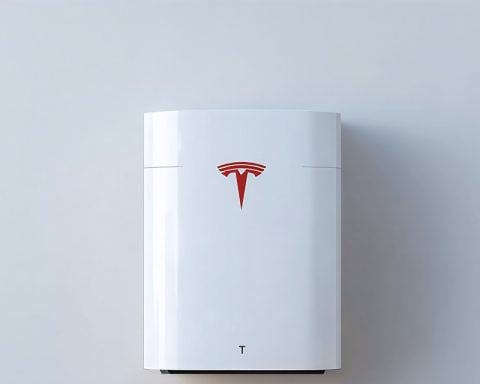- UBE Corporation is investing $500 million to build a state-of-the-art plant in Louisiana, revolutionizing battery component production in the US.
- The new facility at Waggaman’s Cornerstone Energy Park will produce key ingredients, dimethyl carbonate (DMC) and ethyl methyl carbonate (EMC), vital for electric vehicle batteries and energy storage.
- The plant introduces UBE’s proprietary nitrite process, providing eco-friendly production with minimal environmental impact and reduced by-products.
- This venture will create over 400 construction jobs and 50-60 full-time positions, boosting local employment and manufacturing capabilities.
- Scheduled for completion in 2026, UBE’s plant will significantly increase the US’s self-sufficiency in battery materials, enhancing energy independence.
Louisiana’s industrial landscape dances to the rhythm of innovation as Japan’s UBE Corporation initiates a transformative venture—a colossal $500 million plant that promises to reshape America’s battery component production. Nestled at Waggaman’s Cornerstone Energy Park, this cutting-edge facility is set to churn out vital ingredients, dimethyl carbonate (DMC) and ethyl methyl carbonate (EMC), indispensable for powering electric vehicles and enhancing energy storage systems.
The air was charged with excitement as UBE ceremoniously marked the beginning of this ambitious project with a time-honored sake barrel-breaking ritual. Not only is this plant groundbreaking for its industrious ambition, but its strategic vision aims to sever America’s reliance on imported materials, heralding a new era of self-sufficiency.
What sets UBE’s project apart from other endeavors is its propriety nitrite process, refined over decades, which boasts minimal environmental footprints and reduces the by-products, a feat particularly notable when compared to global counterparts. In collaboration with UBE’s US subsidiary, the plant foresees an annual production capability of 100,000 tons of DMC and 40,000 tons of EMC, showcasing not just ambition, but an unparalleled committment to American industrial might.
Beyond its ecological and economic contributions, this plant is a beacon of employment opportunities, promising over 400 construction jobs and securing 50-60 full-time positions upon its 2026 completion. As the only domestic source of these crucial materials, UBE is not merely building a plant, but laying the foundation for a rejuvenated manufacturing hub in the heart of Jefferson Parish.
In a substantial leap forward, the US stands poised on the threshold of energy independence, championing a greener future while fortifying its economic fortitude.
Unlocking the Future: How UBE’s $500 Million Plant is Transcending the Battery Component Market
How-To Steps & Life Hacks
How to Leverage Economic Opportunities from UBE’s Plant:
1. Stay Informed: Regularly check announcements from local government agencies and job boards for emerging job opportunities.
2. Enhance Skillsets: Align your qualifications with the industry’s needs by seeking relevant certifications or training in chemical manufacturing and plant operations.
3. Network Locally: Attend community and industry meetings where stakeholders might discuss the plant’s developments and opportunities.
Real-World Use Cases
UBE’s plant will significantly impact multiple areas:
1. Electric Vehicles (EVs): By locally sourcing DMC and EMC, which are essential for battery production, they reduce transportation costs and support the expansion of the EV industry in North America.
2. Energy Storage Systems: These carbonates are vital for energy storage solutions, ensuring enhanced efficiency and sustainability of renewable energy systems.
Market Forecasts & Industry Trends
The production of DMC and EMC at this scale marks a critical step in the U.S. moving towards energy independence, particularly in the EV sector. According to a Grand View Research report, the global battery market is expected to grow at a CAGR of 14.1% from 2021 to 2028. The American domestic production capabilities could play a significant role in capturing a substantial market share.
Reviews & Comparisons
When compared to other global competitors, UBE’s innovative nitrite process stands out. This proprietary technology is environmentally superior and cost-effective, providing an edge over traditional methods predominantly used in Asia.
Controversies & Limitations
Controversies: Often, large industrial projects face scrutiny regarding environmental impacts despite improved processes. Community and environmental groups may raise issues about potential emissions and ecological impact.
Limitations: There might be initial production scale challenges and dependencies on raw materials, but UBE’s established infrastructure and processes are designed to mitigate these aspects.
Features, Specs & Pricing
– Production Capacity: 100,000 tons of DMC, 40,000 tons of EMC annually.
– Investment: $500 million in constructing the plant.
– Timeline: Expected completion in 2026.
Security & Sustainability
UBE’s method is environmentally and economically beneficial, reducing reliance on imports and aiming for minimal waste production. Security in terms of local supply chains for battery materials also bolsters national energy security.
Insights & Predictions
The establishment of this facility signals a shift toward domestic production of essential components for the growing EV industry. We can predict a reduction in battery costs over time due to decreased import reliance and production efficiencies.
Tutorials & Compatibility
Tutorial for Aspiring Chemical Engineers:
– Understand the Processes: Study the chemistry of carbonate production, including nitrite processes.
– Industrial Software: Familiarize yourself with process simulation software like Aspen Plus to model chemical processes and optimize production.
Pros & Cons Overview
Pros:
– Reduces dependency on foreign imports.
– Potentially creates hundreds of jobs.
– Has a reduced environmental footprint.
Cons:
– Requires significant initial investment.
– May face siting and permit challenges.
– Transition period until project completion in 2026.
Quick Tips for Local Businesses
– Engage with UBE: Local suppliers should reach out to offer services or products that align with the plant’s needs.
– Adapt Strategies: Businesses can adjust strategies to cater to the growing workforce and potential new customer base.
To keep up with industrial and commodity market trends, updates on battery technologies, or related environmental advancements, visit: Wall Street Journal.












